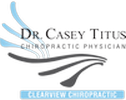An Overview of Neck Pain And Whiplash
Neck pain and whiplash-associated disorders (WAD) affect a large number of individuals (approx. 12-70% of the population in a given year).
Recently the Bone and Joint Decade 2000-2010 Task Force on Neck Pain (Spine 2008;33[4s]suppl.15:S5-S7) released their findings on treatments for neck pain. Among the highlights were:
- Most neck pain becomes chronic and symptoms do not completely resolve; between 50 and 85% of patients will experience neck pain one to five years later
- For most patients without radicular symptoms, getting back to work and returning to normal activities appears to improve outcomes
- Nonsurgical treatments appear to be more beneficial than usual care, sham, or alternative interventions, but none of the active treatments were clearly superior to any other in the short or long term. Manual therapy, mobilization, manual therapy, exercises, low-level laser therapy, educational videos, and perhaps acupuncture appeared to be helpful
- When choosing treatments to relieve WAD grades I and II neck pain, patients and their clinicians should consider the potential side effects and personal preferences regarding treatment options

Questions You Should Ask Dr. Titus

Ask how neck pain patients are examined, and whether I feel are x-rays are needed to screen for instability or anomalies.
If you respond positively to treatment, this would justify continued care, provided there is gradually less weekly frequency. Six to eight adjustments in the first two weeks would not be unusual. This frequency would be rare for a patient in the second month of care.
Surprising Data Regarding Whiplash Injuries In Car Accidents
A study by Hodgson in 1989 indicated that…
- 62% of those injured in automobile accidents still have significant symptoms caused by the accident 12 1/2 years after being injured; and that of the symptomatic
- 62%, 62.5% had to permanently alter their work activities and 44% had to permanently alter their leisure activities in order to avoid exacerbation of symptoms.
- One of the conclusions of the article is that these long-term residuals were most likely the result of post-traumatic alterations in the once damaged tissues.
A study by Gargan in 1990 indicated that…
- Only 12% of those sustaining a soft tissue neck injury had achieved a complete recovery more than ten years after the date of the accident. One of the conclusions of this study is that the patient's symptoms would not improve after a period of two years following the injury.
- It is established neurologically (Wyke 1985, Kirkalady-Willis and Cassidy 1985) that when a chiropractor adjusts (specific directional spinal manipulation) the joints of the region of pain and/or spasm, that there is a depolarization of the mechanoreceptors that are located in the facet joint capsular ligaments, and that the cycle of pain and/or spasm can be neurologically aborted.
What on earth does this mean?
It means that Chiropractic adjustments can interrupt the pain cycle through nerve endings and the brain, promoting a painless sensation for days following the session.
This is why many patients feel better after they receive specific joint manipulation from a chiropractor following an episode of increased pain and/or spasm.
If you're considering Chiropractic care for the first time, or looking for a qualified professional in the Outer Banks to answer your questions, Dr. Titus will gladly schedule a consultation for you free of charge.
The entire staff of Clearview Wellness along with Dr. Casey Titus is proud to be a part of your journey towards a healthy life.



